CORMIX Methodology
|
CORMIX is a USEPA-supported methodology for simulation of turbulent
buoyant jet mixing behavior which covers a majority of common discharge and environmental conditions.
It classifies momentum and buoyancy of the discharge in relation to boundary
interactions to accurately predict mixing behavior. Boundary interactions can be flow surface or
bottom contact or terminal layer formation in density stratified ambients.
The flow trapping shown in the images on the right are indicated by a CORMIX1 S
flow classification. This trapping behavior can sometimes be ecologically desirable and attainable
with appropriate outfall design.
The hydrodynamic simulation system contains a collection of regional flow models based upon integral,
length scale, and passive diffusion approaches to simulate the hydrodynamics
of near-field and far-field mixing zones.
Efficient computational algorithms provide simulation results in seconds for mixing zone problems with space scales of meters to
kilometers and time scales of seconds to hours.
|
Ambient density stratification causes boundary interaction behavior and
produces a terminal layer and subsequent density current formation for this single port
discharge in a stagnant ambient.
(Image Source: Hofer, Kurt (1978) - Eine verbesserte Theorie turbulenter Freistrahlen im stratifizierten Medium und ihr Vergleich mit dem Experiment.
Mitteilung VAW-ETH No. 31).
|
The Critical Role of Boundary Interaction in Mixing Zone Analysis
The CORMIX methodology emphasizes the role of boundary interaction on mixing.
Plume boundary interaction defines the transition from near-field to far-field
mixing.
Boundary interactions can be in the form of near-field wake
or Coanda attachments, stratified terminal layer formation,
or contact with the water surface or bottom.
The hydrodynamic simulation system executes a series of regional flow prediction modules for
both stable and unstable near-field mixing processes.
|
|
CORMIX Systems for Mixing Zone Analysis and Outfall Design
The advanced tools release, CORMIX - GT, gives the analyst powerful
new tools for mixing zone analysis and visualization.
CORMIX is an easy-to-use rule-based expert system has an extensive development history.
This state-of-the-art system has been applied by over 4000 environmental professionals worldwide since 1988.
|
The CORMIX rule bases integrate with visualization and design tools to form a complete system for outfall design
and mixing zone optimization.
|
The set of false-color laser-induced fluorescence (LIF) images on the right illustrates boundary
interaction behavior for a multiport diffuser in crossflow.
Crossflow velocity (left to right) is increased from top series (a, d) to the bottom (c, f) causing
plume wake attachment (c, e, f).
The greater discharge port height on the left (a, b, c)
resists bottom attachment as crossflow velocity increases.
|
|
The CORMIX Hydrodynamic Classification Scheme
CORMIX consists of a rule-based flow classification system (set of rules) about mixing zone analysis
linked to a series of hydrodynamic simulation models, visualization routines, and outfall design tools.
The system uses length scales to categorize boundary
interaction processes which control mixing zone stability.
Flow near-field dynamic attachment processes
are also simulated. The complete scheme contains over 100 distinct flow classifications of
plume behavior and boundary interaction processes for a rigorous
analysis of mixing zone characteristics.
The classification also assists in evaluation of regulatory mixing zone requirements and
facilitates outfall design optimization.
|
|
The Rule-based Expert Systems Approach for Documented Regulatory Decision Support
The rule base provides a rigorous, descriptive, and documented analysis of mixing process for
both regulators and dischargers. An example of a rule appears in the image on the right.
The complete rule base contains over 2000 rules to analyze the spatial and technical requirements for regulatory
mixing zones, including evaluation of water quality standards.
The system uses both forward-chaining (inductive logic) and backward-chaining (deductive logic) reasoning strategies to
analyze mixing zone behavior and document
regulatory compliance.
Within the system, several advanced artificial intelligence (AI) and
computer-aided-design (CAD) software tools are available to assist the
analyst in mixing zone prediction.
The system relies on a
rule-based classification system to predict hydrodynamic mixing zone behavior
and document regulatory compliance.
The image on the right shows flow classification rules. Other rule base segments check for input data
consistency, analyze regulatory requirements, and give advice
for outfall design optimization.
|
The rule-base browser of CORMIX shows the entire rule tree of IF ( conditions) - THEN ( conclusion) rules used in the
flow classification segment (larger image).
The flow classification (conclusion in red) depends upon the conditions (green, blue, magenta, yellow).
|
CORMIX simulation documentation consists of text,
tables, diagrams, and visualization graphics.
Several advanced software systems facilitate rapid and complete mixing zone analysis.
|
A modern multiport diffuser outfall under construction on Lake Cayuga, New York. This 30-m long diffuser has alternating ports designed to limit creation of discharge induced ambient currents. (Photo: G. Jirka).
|
CORMIX Discharge Source Subsystems
CORMIX has 3 discharge subsystems which depend upon source discharge characteristics. These subsystems are listed below.
1. CORMIX1: Single Port Outfalls
CORMIX1 deals with single port discharges into flowing unstratified or stratified water environments,
such as rivers, lakes, estuaries,
and coastal waters.
It includes the limiting cases of non-buoyant and negatively
buoyant discharges and of stagnant ambient conditions.
It also deals with tidal reversing flow conditions and arbitrary ambient current
and density profiles with CorJet.
|
|
2.CORMIX2: Multiport Submerged Outfalls
Subsystem CORMIX2 deals with submerged multiport diffuser discharges into similar environments and
with similar limiting cases. Unidirectional, alternating,
and staged diffuser types are simulated by the system.
|
|
3.CORMIX3: Surface Buoyant Discharge
Subsystem CORMIX3 deals with buoyant surface discharges into similar environments.
However, it is constrained to positively buoyant (or non-buoyant) discharges. CORMIX-GTS extends
CORMIX3 to negatively buoyant surface discharges.
|
A CorVue 2-D x-y plot of a FJ1 surface buoyant jet.
|


l.jpg)
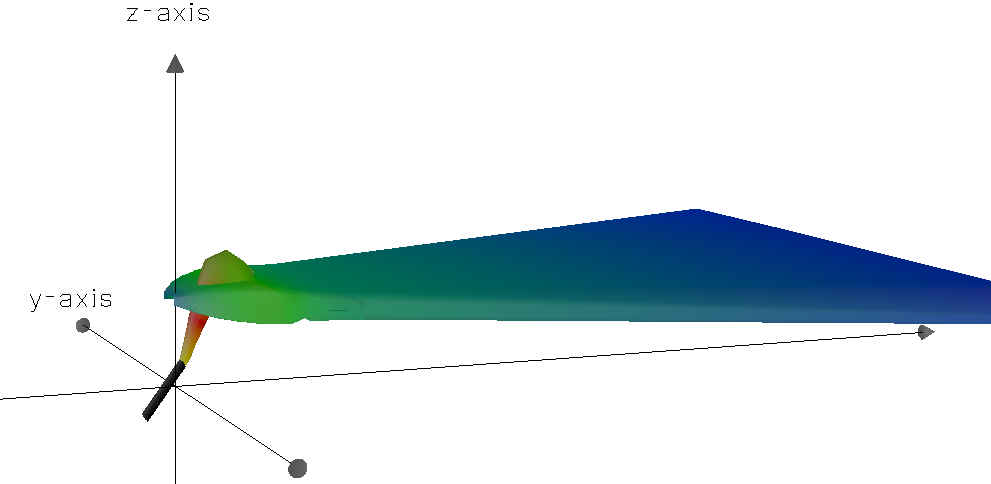
EndView,SinglePort,30degreesBelowHoriz.jpg)
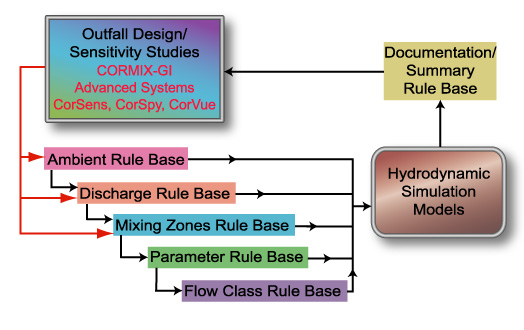
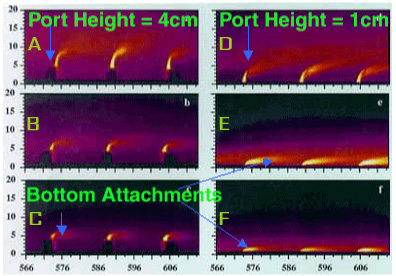
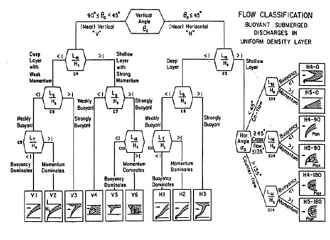
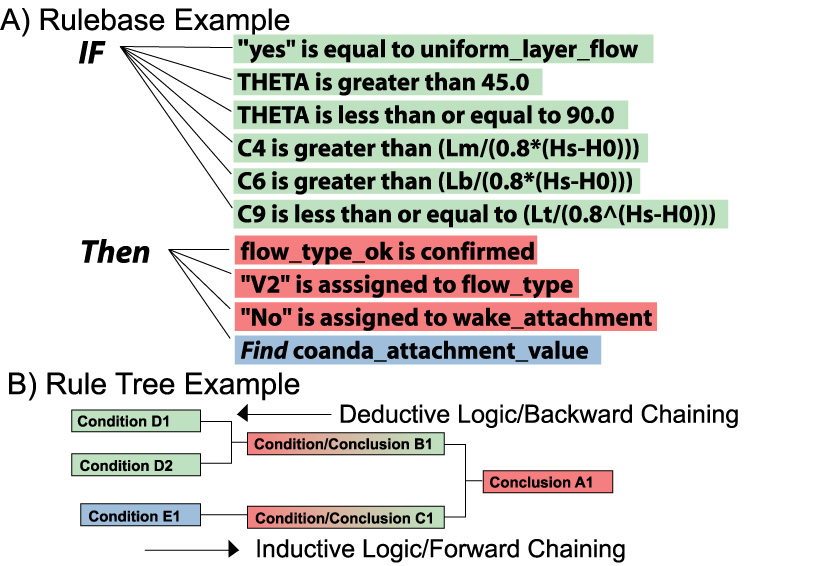
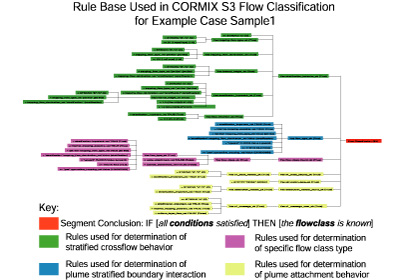
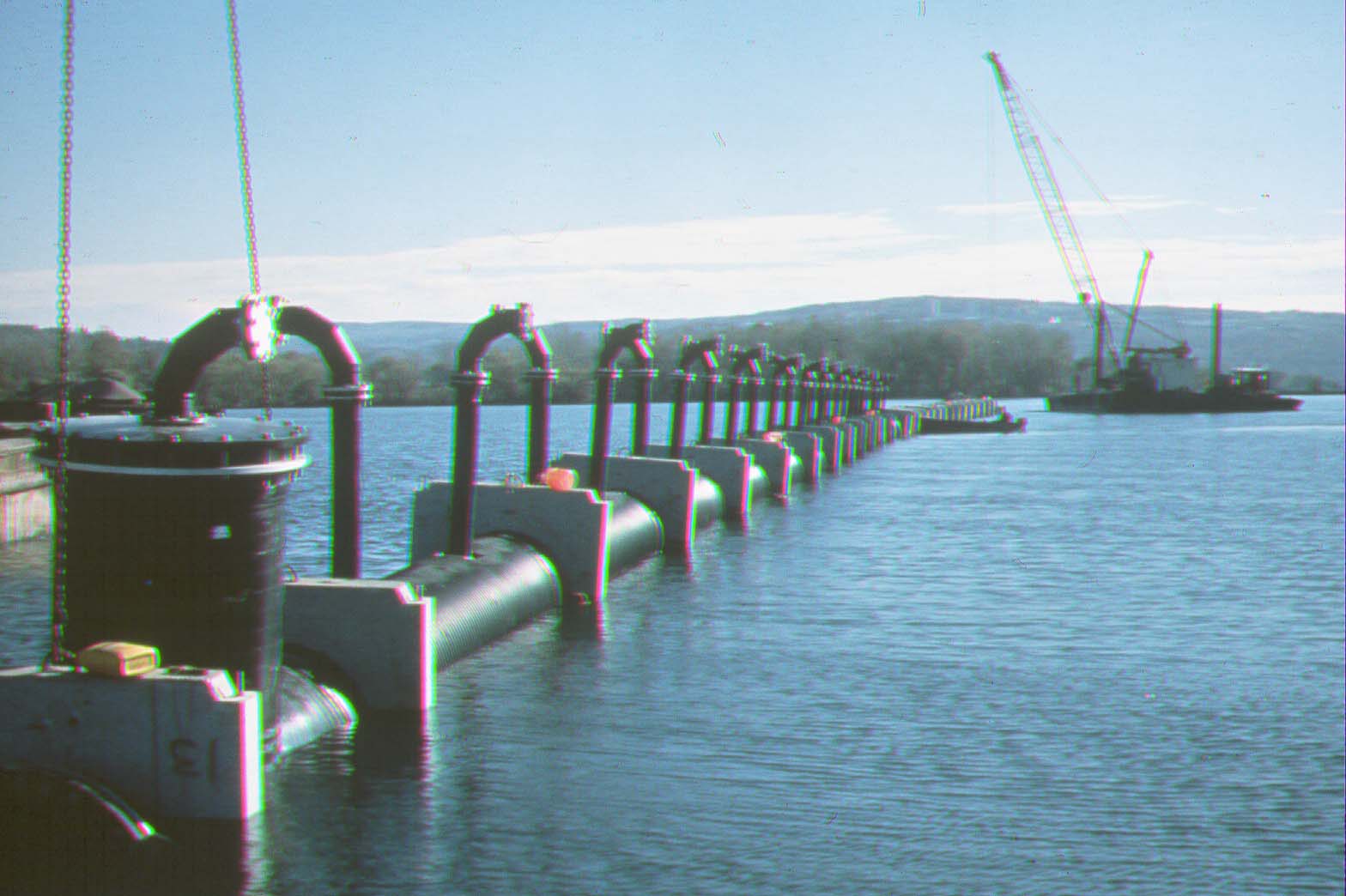
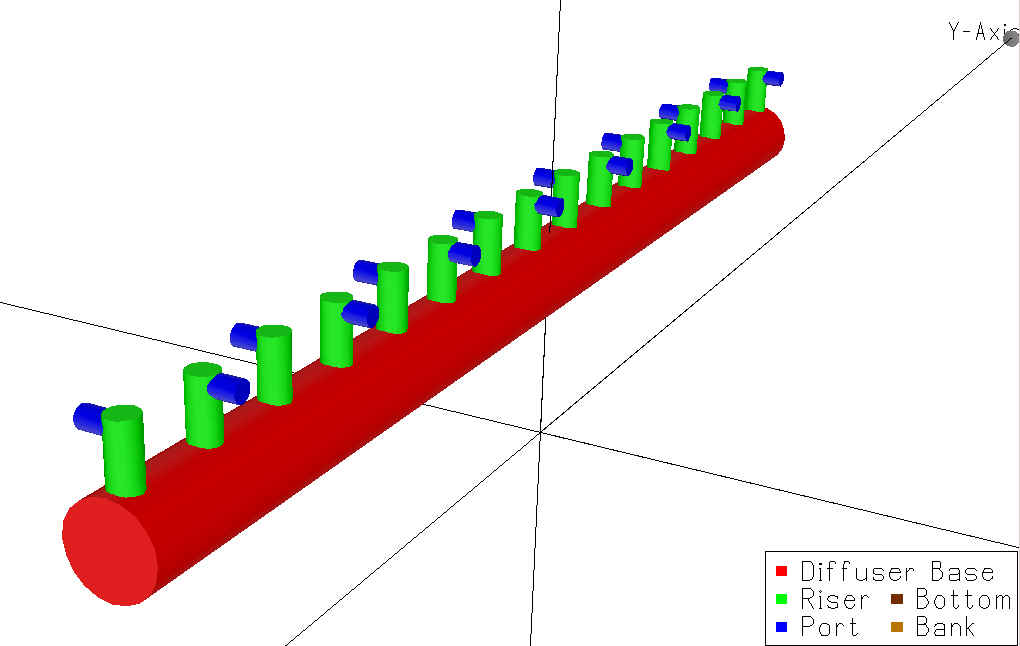
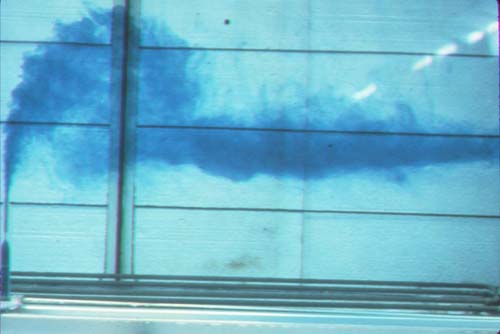

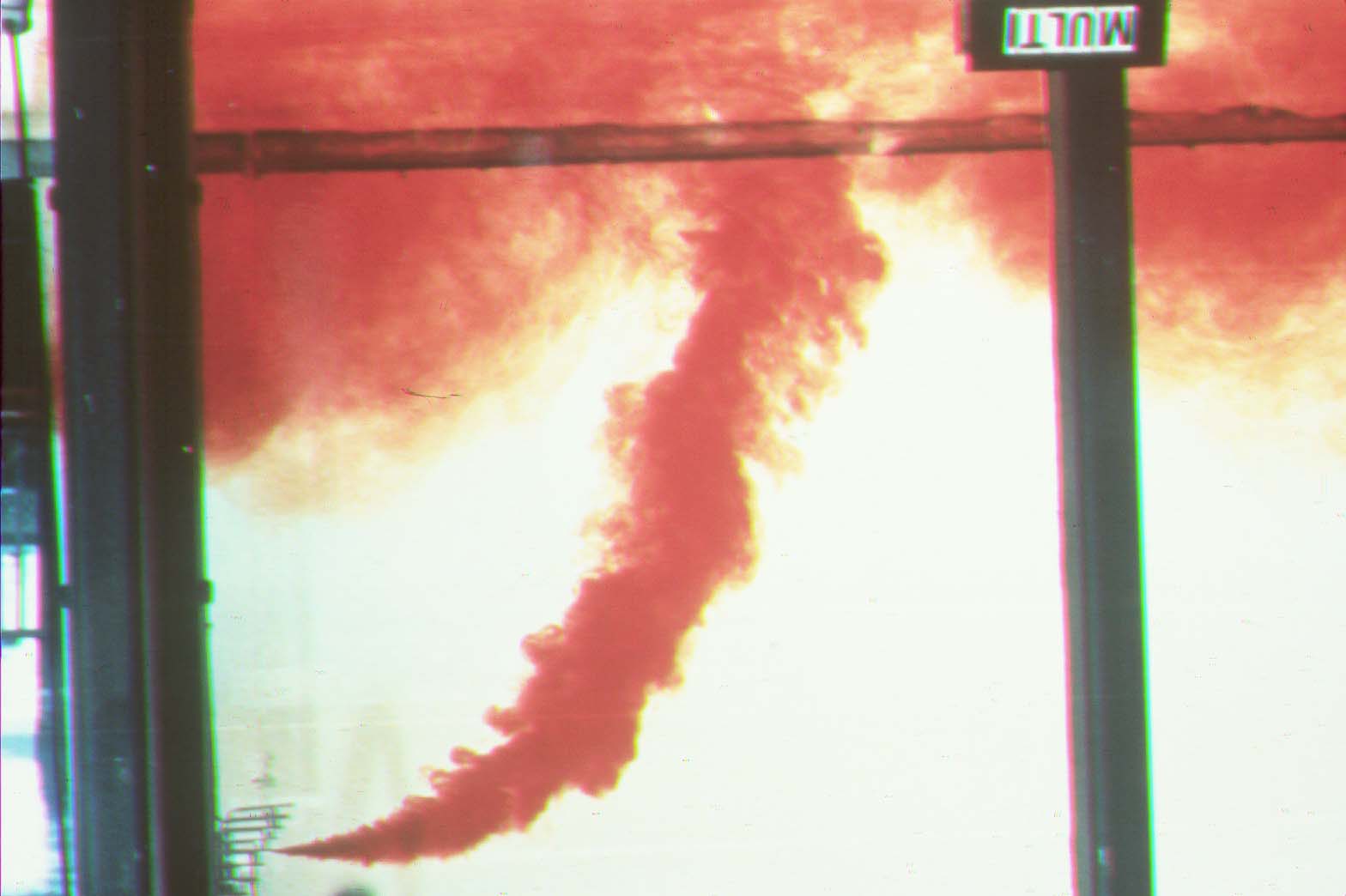
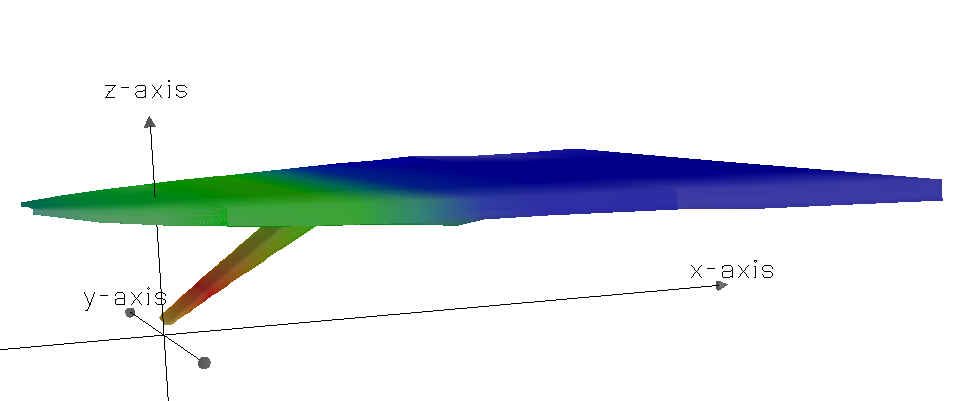
.jpg)
